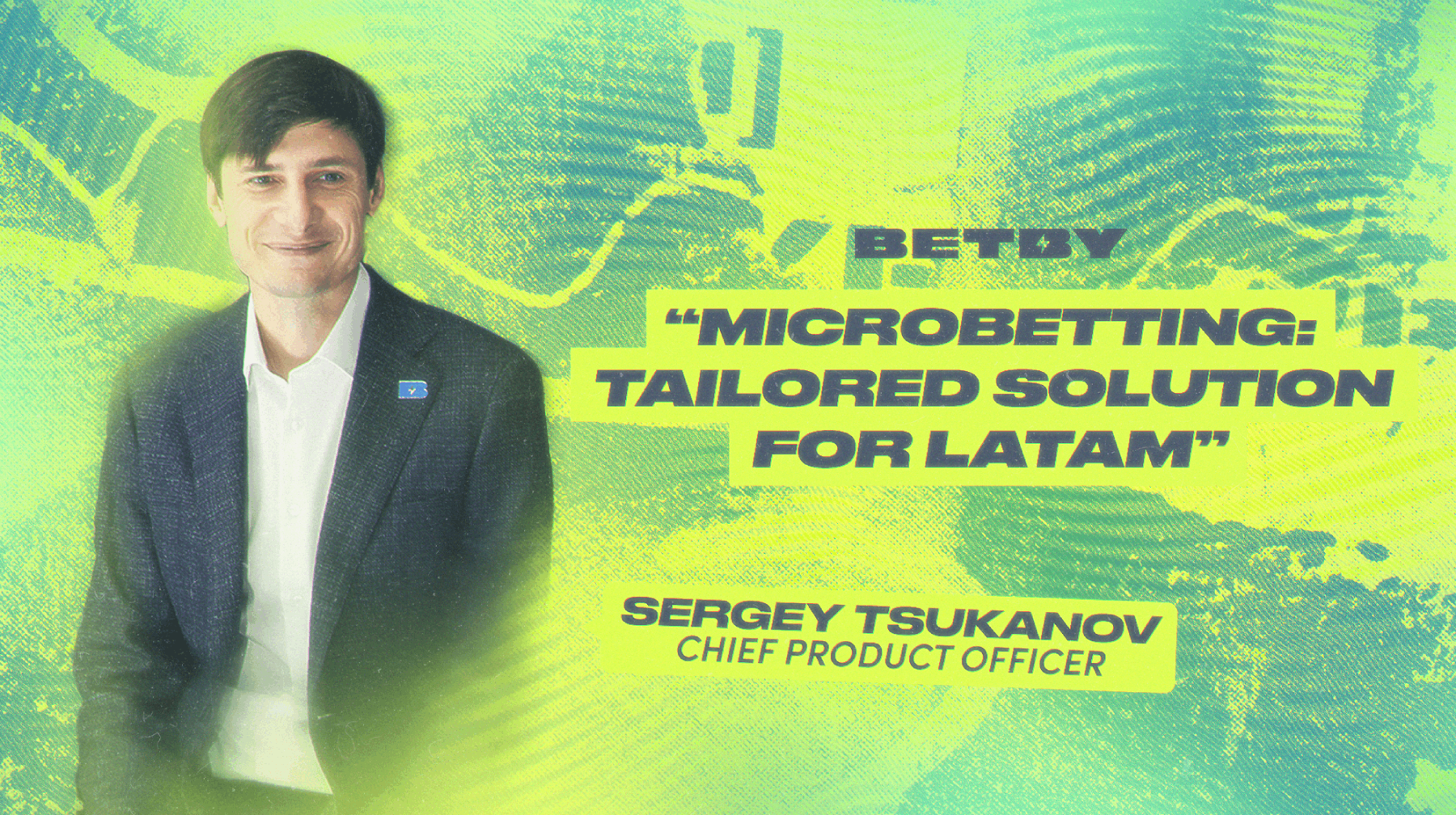Sergey Tsukanov, BETBY's Chief Sportsbook Officer, delves into microbetting’s potential in LatAm, highlighting market dynamics, compliance hurdles, and technology’s transformative role.
Microbetting has exploded in the US. What kind of potential do you see for the practice in the LatAm region?
▪️LatAm presents significant potential for microbetting, driven by its deep-rooted passion for sports and distinctive betting behaviors. According to a TGM Research survey, 75% of South American bettors engage in real-time betting, with Brazil (82%), Peru (82%), and Mexico (80%) leading the trend.
This preference aligns with microbetting, where markets are settled within minutes or even seconds. Other studies show that 40% of LatAm bettors place wagers for the excitement—the highest percentage worldwide—making microbetting dynamic and immersive nature particularly appealing. Furthermore, 79% of users in the region actively watch most events they bet on, reinforcing microbetting’s relevance as it requires live game engagement for instant action.
With these factors in place, LatAm offers immense opportunities for both operators and bettors.
What, in your experience, are the biggest sports for microbetting? Are there any sports in which microbetting has become a growing trend in recent times?
▪️In the US, American football, baseball, and basketball are the most bet-on sports for microbetting. However, football leads the way in LatAm, as it naturally supports microbetting through its frequent in-game stoppages and continuous in-play markets.
Esports and virtual sports are also seeing strong adoption, as they provide fast-paced action and short-duration events—ideal for microbetting. The combination of instant settlement and immersive viewing makes these sports a natural fit for real-time betting markets.
In what way have technologies like AI allowed microbetting to bloom?
▪️AI has played a fundamental role in enabling the growth of microbetting by facilitating real-time odds calculation, automated market generation, and personalized betting experiences.
Machine learning models analyze large volumes of in-game data, allowing sportsbooks to generate and adjust odds within seconds. On the user side, AI-driven personalization allows sportsbooks to tailor betting options to individual preferences, ensuring that a player’s most preferred bets are always available.
Without AI, the ability to process and interpret data at scale in real-time would not be as seamless or widespread. As a result, AI reduces reliance on manual decision-making and enhances market efficiency.
In your experience, what are the key compliance-related challenges associated with developing a microbetting product? How do these challenges change when considering the LatAm market?
▪️Developing a microbetting product in LatAm presents key regulatory challenges, as compliance structures differ significantly across countries.
For instance, licensing requirements in Argentina, Brazil, Mexico, and Colombia are separate, meaning operators must adapt to varied compliance frameworks. Additionally, microbetting’s rapid nature demands strict data integrity and security to prevent manipulation.
Latency is a major challenge in this area, as it requires advanced technology for real-time market updates. In some LatAm regions, microbetting faces challenges due to slower payment processing and fraud prevention mechanisms. Success depends on balancing compliance, security, and technology efficiency.
Do you think there is any cause for concern around microbetting affecting game integrity with regard to match-fixing, particularly in the LatAm market?
▪️There is no evidence to suggest that microbetting poses a greater risk to game integrity compared to traditional betting.
According to a report by the IBIA (International Betting Integrity Association), in-play betting accounts for 78% of global football betting turnover, yet only 6% of suspicious activity is linked to in-play markets.
For football and basketball, turnover for traditional and in-play betting is high, but match-fixing manipulation risks remain low. This is due to increased monitoring, AI-driven detection tools, and collaboration with law enforcement to mitigate risks.
Do you believe the pop-up nature of microbetting encourages impulsive gambling? Should there be alarm bells ringing around this trend?
▪️Microbetting has a fast-paced nature, which means responsible gaming measures must be reinforced. However, the industry is adopting safeguards, including betting limits, self-exclusion tools, and responsible gaming prompts.
Operators must ensure microbetting is positioned as an engaging, interactive experience while preventing harmful gambling behaviors. Education and strict consumer protections will be key to ensuring sustainable industry growth and consumer well-being.
Original article ➡️click here
